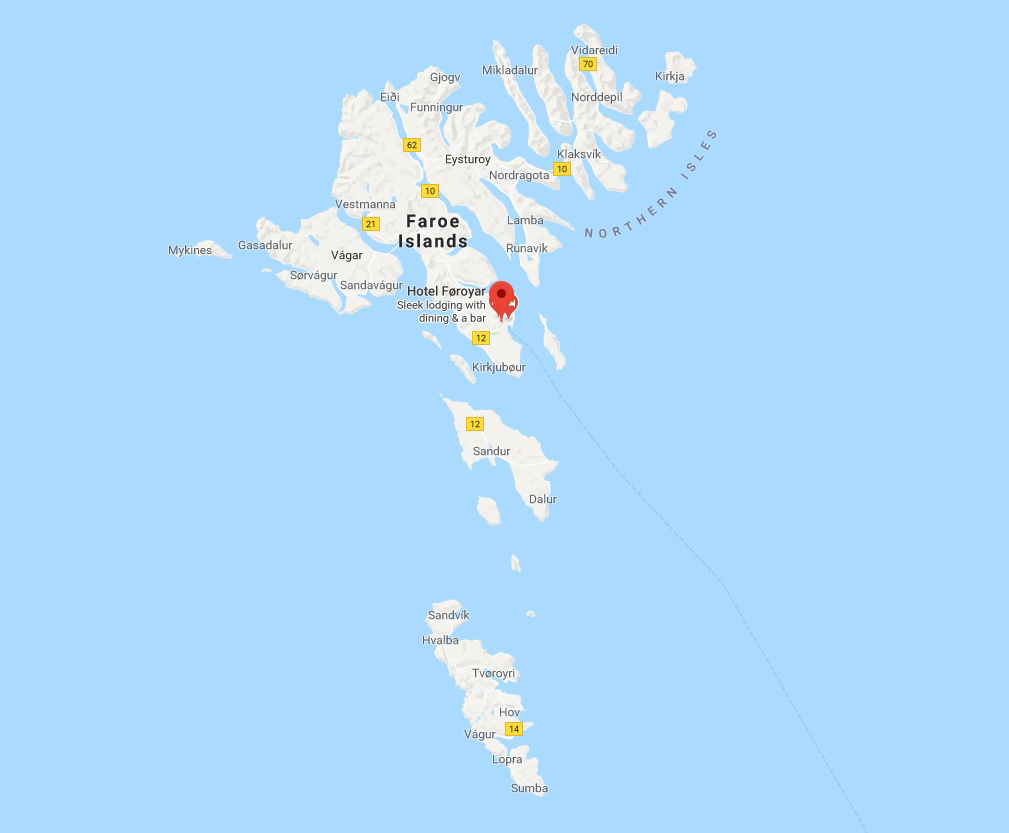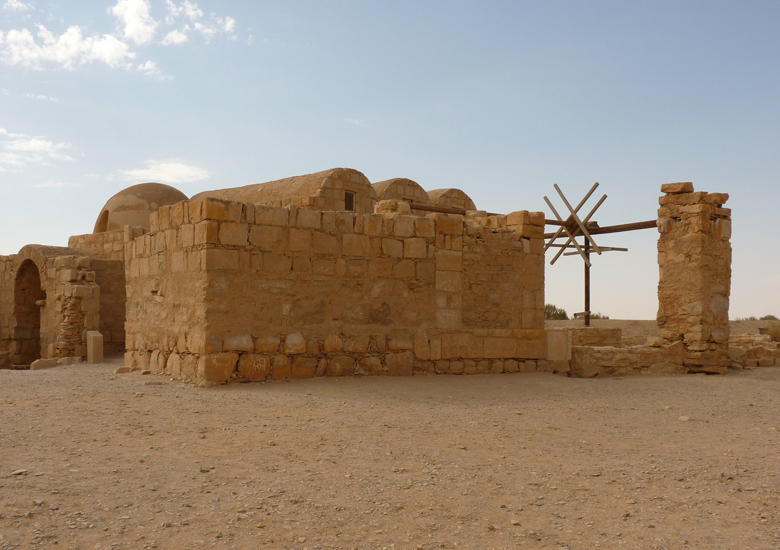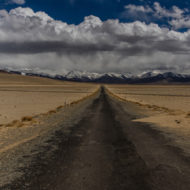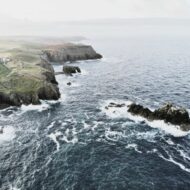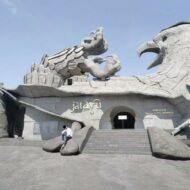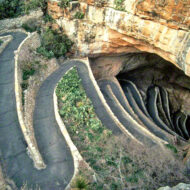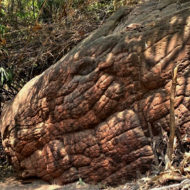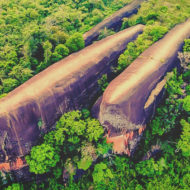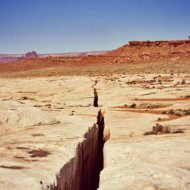Qasr Amra is the most famous of the desert castles located in what is now eastern Jordan. It was built at the beginning of the 8th century, sometime between 723 and 743, by Walid Ibn Yazid, the future Umayyad Caliph Walid II, at the time of the expansion of Islamic domination in this region. It is one of the most notable examples of early Umayyad art and Islamic architecture. It is considered one of the most important examples of the first Islamic art and architecture.
The Qasr Amra castle was used as a summer resort by the caliph or his princes, for sport and pleasure. It was covered by frescoes depicting hunting scenes -of mammals already extinct in the Near East due to overhunting-, fruits and women. It also contains a thermal system divided into three parts, which testifies to a Roman influence.
The site is now protected and fenced, and is part of the cultural property managed by the Jordanian Ministry of Tourism and Antiquities.
World Heritage Ranking by UNESCO : The castle was declared a UNESCO World Heritage Site in 1985 according to criteria i, iii and iv “masterpiece of human creative genius”, “unique or at least exceptional testimony of ‘a cultural tradition’, and ‘a remarkable example of a type of building, architectural or technological ensemble or landscape illustrating a significant stage in human history’.
Access : Coordinates: 31.801935, 36.57663/ The castle is located at the edge of Highway 40, about 85 kilometers from Amman, and about 21 kilometers from Al-Azraq / By car : a short distance (15 kilometers) from Qasr al-Kharana, still on the same road that leads to Amman./
Highlights :
- the main Building : It is a low building made from limestone and basalt , two stories high, features a triple-vaulted ceiling over the main entrance on the east facade,the site suggest that it was part of a 25-hectare complex, remains of a castle suggest that could have housed a garrison , at The western part of the complex feature some smaller vaults or domes. Southeast of the main building a well 40 metres deep located and traces of the animal-driven lifting mechanism and a dam-Water supply system as well.
- The building containing the baths is composed of 7 rooms: a reception room with its throne, 2 rest rooms, 1 room with bench, 1 tepidarium (warm bath), 1 caldarium (hot bath) and a heating room. The roof, rather than being simple and united, shows all the Umayyad know-how, consisting of 9 vaults and a cross. Next to the baths is another building, the Saqiyya, a building containing a well and its water recovery basin. The water was transferred to the baths through an underground pipe system.
- frescoes , In the reception room, the right wall is divided into 4 scenes: a princely hunting, a representative 6 sovereigns (Roderic of the Visigoths, Justinian II of the Byzantines, Chosroes of the Persians, Negus of the Abyssinians and probably the king of the Indies as well as the Emperor of China), a representation of a naked woman bathing and young people harvesting olives.
Operating Hours : May – September 8 – 18 hs , October – April 8 – 16 hs
Admission Fees : Qusayr Amra costs 1 JD for a ticket. This ticket also covers entrance to Qasr Al Azraq and Qasr Kharana
Activities : photo opportunities / Scenic Driving- Auto Touring / experience traditional rural life / Ceremonial experiences / Guided group tours / hiking options / Private Tours: Full-Day Islamic Desert Castles and Ajloun Castle Trip from Amman
Go next : other Desert Castles : Qasr Ussaykhim – Qasr Al-Azraq – Qasr Kharana – Qasr Al-Hallabat – Hammam as-Sarah- Qasr Al-Azraq / Petra / Wadi Rum


